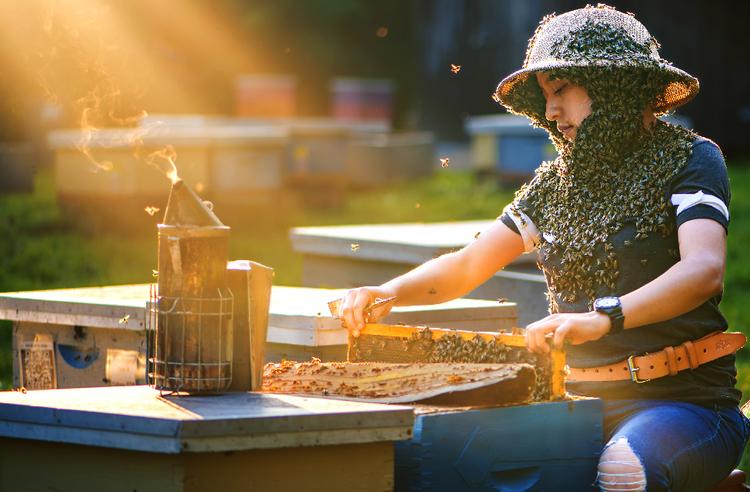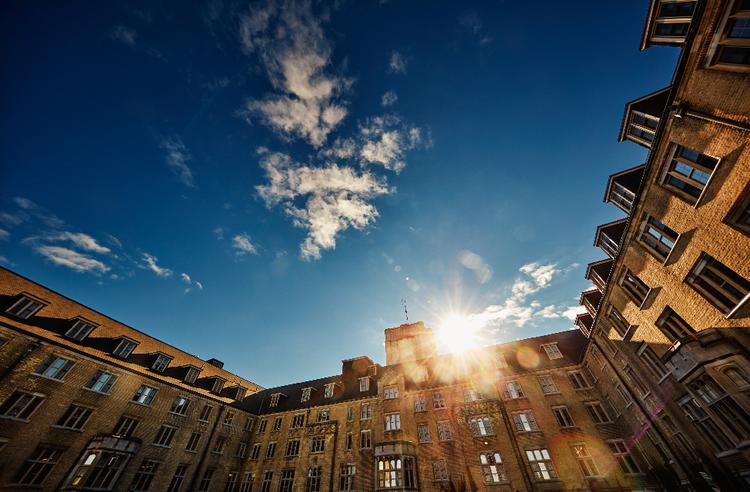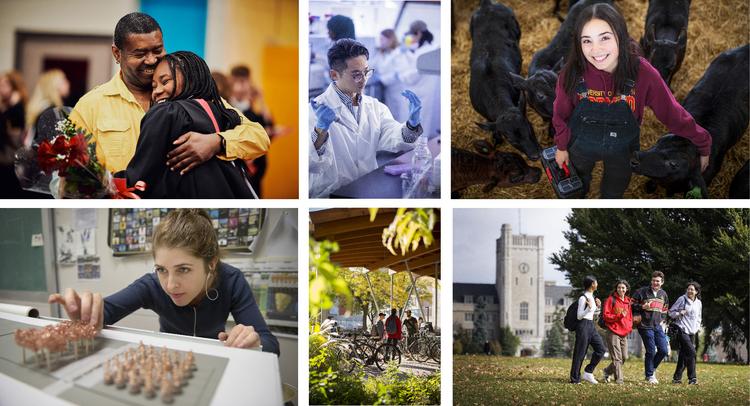Photography and Videography
On This Page:
Photography and videography are a unique opportunity to visually bring the University of Guelph’s brand to life by showcasing our community and the people and places within it. The quality of the imagery we choose to highlight is critical to authentically capturing the essence of our identity, while communicating our values and relaying important information.
Photography: Photo Styles
All photos utilized in branded content should be defined by one of the following styles:

Portrait
Portrait photography places focus on a particular person or group to capture their unique personality, identity, and character. This style of photo is best utilized to create a personal connection and convey authenticity, or when a person or group are central to a particular story. Preference is given to candid portraits where subjects are shown naturally within their environment.

Hands-On
Hands-on photos are defined as singular, standalone images featuring a person or a part of the person interacting directly with their environment (i.e. hands, eyes, etc.). This style of photo is ideal when you are looking to highlight U of G’s real-world impact or emphasize our commitment to hands-on and experiential learning.

Campus
This style of image focuses on the physical environment and is ideal for highlighting the beauty and essence of our campus. To capture buildings and architecture effectively, shoot during the softer light of early morning or late afternoon. This enhances texture and color to make the environment appear more vibrant and engaging. Use these types of photos when you need to add a visual element to content that does not prominently feature people, or when our physical campus is central to the story.

Community
This style of imagery aims to capture the essence of our welcoming community by showcasing events and community engagement. Use wide-angle shots and dynamic range to pull focus on key expressions that evoke emotion. Be sure to highlight the diversity of our community while also incorporating brand gear, colours, and a lively atmosphere. Campus life photography is ideal for authentically representing the community experience or spotlighting timely campus events.
Photography: Best Practices
Tips for Effective Photography
Plan for Natural Light: Schedule shoots during optimal lighting conditions, such as early morning or late afternoon, to capture softer light and richer textures. If shooting indoors, use natural light wherever possible.
Emphasize Emotion: Focus on capturing candid moments that convey emotion, whether it is the excitement of a campus event, the concentration of a student in a lab, or the joy of recreational activities.
Use the Rule of Thirds: Apply the rule of thirds to create balanced compositions and attract the viewer's eye to the most important elements of the image.
Capture Movement and Action: For portraits or events, prioritize shots showing people in action, rather than static poses. This adds energy and dynamism to the image.
Test Different Angles: Experiment with different angles and perspectives, such as shooting from above, below, or from the side, to add visual interest and depth to images.
Use Our Brand: Incorporate U of G colors and branding elements subtly but consistently. This helps reinforce our visual identity without making it feel forced or overly commercial.
Take Multiple Shots: Always take more shots than you think you need. This ensures you have options to choose from when selecting the most dynamic and effective images.
Personal Protective Equipment and Technical Attire: When photographing subjects within a working environment (i.e. laboratory, field work, etc.), ensure they are always wearing proper technical attire (i.e. lab coats within a laboratory) and any necessary safety equipment as per government policy and safety regulations (i.e. goggles, gloves, hairnets, etc.). Any imagery that does not comply with these guidelines cannot be used.
Consider End Use: Think about how you are intending to utilize photography and let that influence your approach. If you need a banner image for your website, get a wide landscape shot and ensure that people are not too close to the edge of the frame as they may be cropped out by banner dimensions. If you need a photo for your Instagram story, be sure to shoot vertically and consider where Instagram’s design elements may cover portions of the photo.

Things to Avoid
Cluttered or Distracting Backgrounds: Avoid busy or cluttered backgrounds that take attention away from the subject. Ensure the environment complements the subject, rather than overwhelm it.
Overly Staged or Inauthentic Poses: Steer clear of stiff, unnatural poses or overly staged shots. Authenticity is key to capturing the genuine atmosphere of campus life and student engagement. Many people also feel more comfortable within a candid environment, which leads to more natural photography. Rigidly staged pictures often feel awkward to pose for, and that awkwardness can be felt in the final image.
Excessive Editing or Filters: Avoid excessive use of filters, editing, or post-production effects that stray from natural, true-to-life imagery. The goal is to reflect the real-life energy and environment of campus.
Subjects in Poor Lighting: Do not use images where subjects are in poorly lit areas or where harsh lighting creates unflattering shadows or inconsistent skin tones.
Ignoring Diversity: Ensure diversity and inclusivity in all imagery. Avoid images that fail to reflect the rich, diverse culture of our community.
Stock Photos: Stock photos will never capture the authenticity of real-world photography from our community. Avoid using stock photos wherever possible. If it is absolutely necessary, be sure to select photos that align with these photography guidelines and receive required permissions/licensing.

Technical Considerations
Image Resolution and File Format
- Ensure images are high resolution for both print and web use. For print, 300dpi is ideal, while 72ppi works well for web.
- Preferred file formats include JPEG, PNG, and TIFF to maintain consistency and quality across platforms.
- Avoid using large file sizes for web content, as this can hinder web performance.
Accessibility Considerations
- When using images for web or digital platforms, ensure there is good contrast between the subject and background.
- Provide alternative text (alt text) for images to make them accessible for screen readers and visually impaired users.
Image Ownership and Permissions
- Always ensure proper image ownership and usage rights are secured. When photographing individuals for any purpose other than general campus events, a release form should be obtained. This ensures legal permission to use their likeness in any university materials. Access our Image Use Consent And Release form.
- For campus events, general images may be used without individual release forms (as per our university polices), but a Recording Notice form should still be used. Even when using a recording notice, it is important to respect privacy and permissions, particularly in sensitive situations or where identifiable minors are involved. For example, a recording notice is acceptable for situations where people understand their presence within a public space (i.e. during events on the main floor of the UC or Branion Plaza), but release forms are required if there could be an assumed right to privacy (i.e. library cubicle or classroom).
Videography
Overview
Video is one of the most compelling mediums that we can harness to tell our stories. While the style, pace, subject matter and budget of video projects can vary drastically, standardized video assets ensure that all U of G videos feel unified and cohesive.
Note: Video is often one of the most expensive and time-consuming forms of brand content that we produce. It is highly recommended that you connect with the C&M team prior to the start of your next video project. Whether storyboarding ideas, searching for quality vendors and quotes, or simply collecting b-roll, the C&M team can support throughout the video production process.
Assets
The following assets will augment any video project. Do not create your own versions of these assets or allow any video production company to alter them. If you require different assets for your video project, please connect with brandguide@uoguelph.ca.
Text and End Cards
- End Cards: Start and/or finish your videos with branded end cards to build recognition and credibility.
- Lower Thirds: Left and right justified lower thirds cater to any angle and provide additional context for audiences.
- Text callouts: A great way to feature key information without using lower thirds.
File Types
- After Effects Files
- MOVs and mp4s for end-cards
- Mogrt files for editable content
